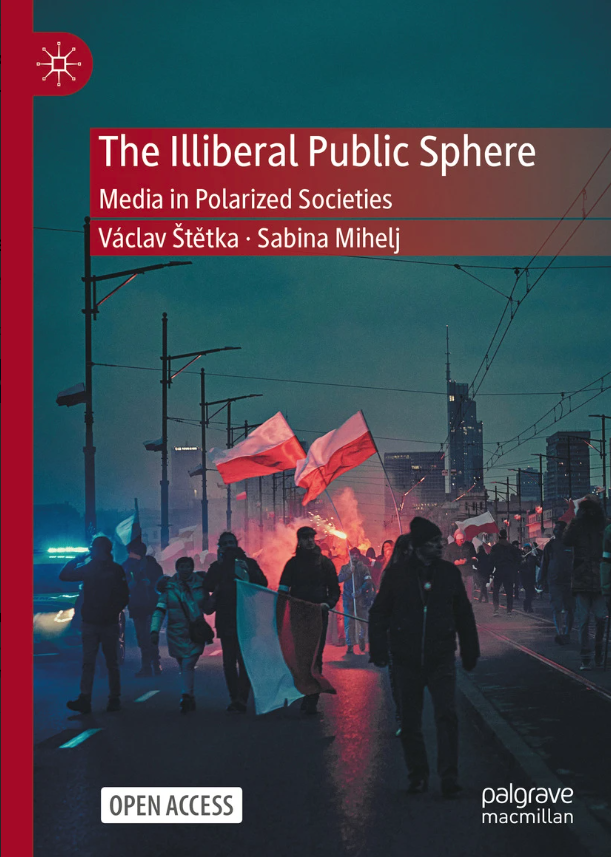
The Illiberal Public Sphere: new book by Václav Štětka and Sabina Mihelj
Liberal democracies across the world are facing a range of challenges, from the growing influence of illiberal leaders and parties to deepening polarization and declining trust in political elites and mainstream media. Although these developments attracted significant scholarly attention, the factors that contribute to the spreading of illiberalism remain poorly understood, and the communication perspective on illiberalism is particularly underdeveloped.
CRCC members Václav Štětka and Sabina Mihelj are addressing this gap in their newly published open access book titled “The Illiberal Public Sphere: Media in Polarized Societies” (Palgrave, 2024). The book provides the first systematic analysis of the role of the media in the rise of illiberalism, based on an original theoretical framework and extensive empirical research that was carried out as part of the ESRC-funded project “The Illiberal Turn: News Consumption, Polarization and Democracy in Central and Eastern Europe” (2019-2022), which collected quantitative and qualitative data in the Czech Republic, Hungary, Poland and Serbia.
Attempting to move beyond the conceptual framework of populism, which according to the authors has been too often used in an indiscriminate way that conflates disparate ideological and political trends, the book introduces the concept of the illiberal public sphere, defined as “a communicative space comprising both traditional and new media that promote and amplify illiberal actors, views, and attitudes” (Štětka and Mihelj, 2024: 3). Identifying three ideal-typical stages in its evolution – incipient, ascendant and hegemonic – the authors argue that the illiberal public sphere gradually colonizes the institutions that have previously served as a cornerstone of the liberal public sphere, including independent news organizations and public service broadcasters, contributing to the polarization and radicalization of political discourse, as well as to the proliferation of illiberal attitudes among citizens.
Drawing on findings from the empirical analysis of data from the four Eastern European countries, Štětka and Mihelj reveal how and why the changing communication environment facilitates selective exposure to ideologically and politically homogeneous sources (and thereby fastens the spiral of polarization), fosters changes in normative assumptions that guide media trust, increases vulnerability to disinformation, and goes hand in hand with growing hostility to immigration and LGBTQ+ rights. The findings furthermore challenge widespread assumptions about digital platforms as key instruments of illiberalism and suggest that their role shifts as the illiberal sphere progresses, often becoming channels of resistance against the illiberal hegemony.
In the concluding part of the book, the authors discuss the prospects for the illiberal public sphere in Eastern Europe and elsewhere in the world, based on recent political developments, and offer some suggestions for journalistic practices and media policies that can help make media systems more resilient and able to deflect and contain the challenges of illiberalism. In that respect, the arguments presented in the book have important implications not just for future research on challenges to liberal democracy, but also for journalists, media regulators and other professionals committed to rebuilding media trust and containing the forces of polarization.